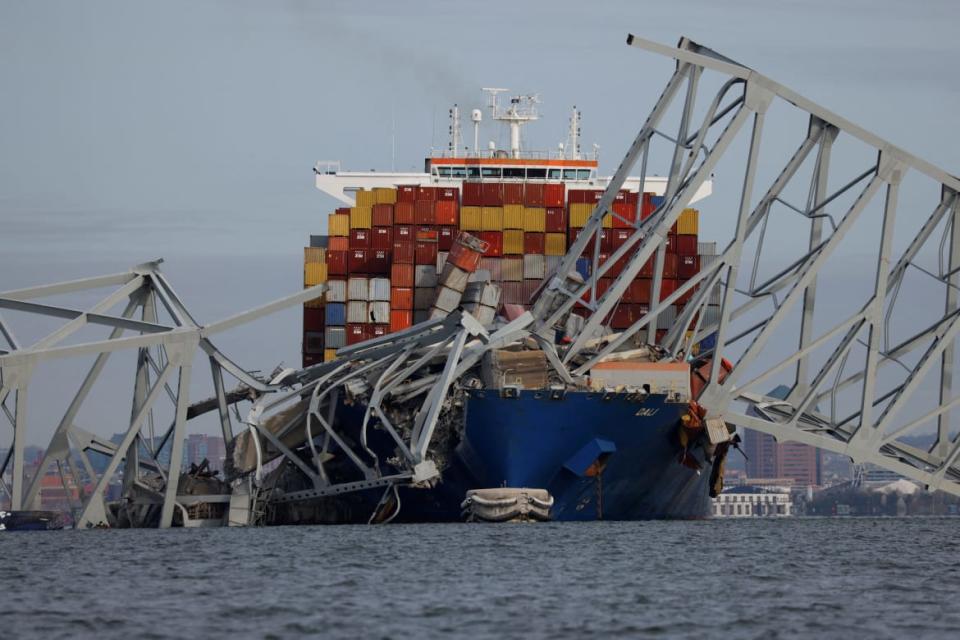He Built the Baltimore Bridge—Then Mourned Its Collapse

Just after 6 a.m. on Tuesday, John “Buddy” Cefalu turned on the TV news and watched the 1.6-mile bridge that he and 100 other ironworkers built nearly a half century ago collapse.
He imagined the ear-splitting noise that must have filled the early morning darkness as the Francis Scott Key Bridge fell into the Patapsco River in Baltimore.
“When it started going, it was going to sound like World War III with all those bolts popping,” he told The Daily Beast. “Some of those bolts in the main span that held that thing together were six to eight inches long.”
And suddenly it was gone.
“It was a giant shock,” he recalled. “After walking atop that steel and fitting it in there with my two hands and with all my brothers, it was the end of an era. It was a landmark that’s been there before a whole lot of people were born. A lot of memories flooded over me of guys that I worked with that are no longer here and some that are.”
He knows the effort that went into connecting each of those girders, some weighing more than 100 tons.
“The guys from Local 16 were the ones that put it together piece by piece with a lot of blood, sweat, and tears,” he said. “It was an engineering feat. And also a human feat to know what you can do with the strength of your body, hanging there with one hand.”
Right-Wing Media Blames Bridge Collapse on ‘Open Border’ and COVID Lockdowns
The other hand would guide in the prefabricated steel.
“They don’t call us cowboys of the sky for nothing,” he said, adding, “It was a tough job, it was a dangerous job. Bad enough on a sunny day in the spring or summer, but in the wintertime with the weather elements, the wind—especially out in the middle of the river—you get caught in storms, whether they be thunderstorms or ice storms.”
Miraculously, there were no fatalities as the ironworkers kept at it, struggling to connect girders that never lined up exactly and had to be forced that last little bit so they could be bolted in place.
“You have to beat them in with a sledge hammer,” Cefalu said. “It's not a caveman process. But it's pretty close. It's just hard work, hard physical labor.”
The ironworkers spray-painted their names and an American flag on the final girder at the top.
Watching the video of that last little piece falling into the dark water before dawn Tuesday, Cefalu worried that this testament to skill and care and determination and confidence and back-breaking work had suffered some unforeseen defect.
“My concern at first was that something had failed, engineering-wise,’ he told The Daily Beast.
But he soon learned that a ship had apparently lost propulsion and control while approaching the bridge. It seemed to have angled in, past a protective barrier, and knocked out the two supports that held the structure aloft.
Six members of a crew that was on a lunch break from filling potholes were missing. Their mission was the same as that of the ironworkers before them.
“Workers up there trying to make a living for their families,” Cefalu said.

The Dali cargo vessel, which crashed into Baltimore’s Francis Scott Key Bridge Tuesday.
He recalled that a barge bearing a crane had struck one support when the bridge was halfway completed. By the summer of 1976, the bridge was near completion, arcing so high over the harbor that he looked down to see the procession of tall ships sailing in to mark the nation’s 200th birthday.
“The Bicentennial ships were coming under the bridge, as we were setting steel on the roadway,” he recalled.
He had become an ironworker two weeks after coming home from the Vietnam War and he got a thrill each time he drove over the bridge he helped build.
“I always look up through my sunroof at the superstructure,” he told The Daily Beast. “Two of my grandsons when they were little, we’d go over and my wife would say, ‘Papa built this bridge.’”
He retired in 2018 having risen from business agent of his local to president of the Mid-Atlantic District Council of the ironworkers.

The Dali cargo vessel, which crashed into Baltimore’s Francis Scott Key Bridge Tuesday.
He drove over the Francis Scott Key just last week and got that same thrill when he gazed up through the sunroof.
“There she is,” he recalled telling himself. “That’s a very prideful thing. I'm very prideful of all my brothers, union brothers who worked on it. We all work together. Not just one guy got it done. It's a monument.”
The U.S. Department of Transportation has opened an investigation into what made the ship lose power, and then bring the monument down. Whatever the cause, President Joe Biden has already pledged that the federal government will pay to rebuild the bridge.
And the cowboys of the air will then again set to work.
Get the Daily Beast's biggest scoops and scandals delivered right to your inbox. Sign up now.
Stay informed and gain unlimited access to the Daily Beast's unmatched reporting. Subscribe now.

